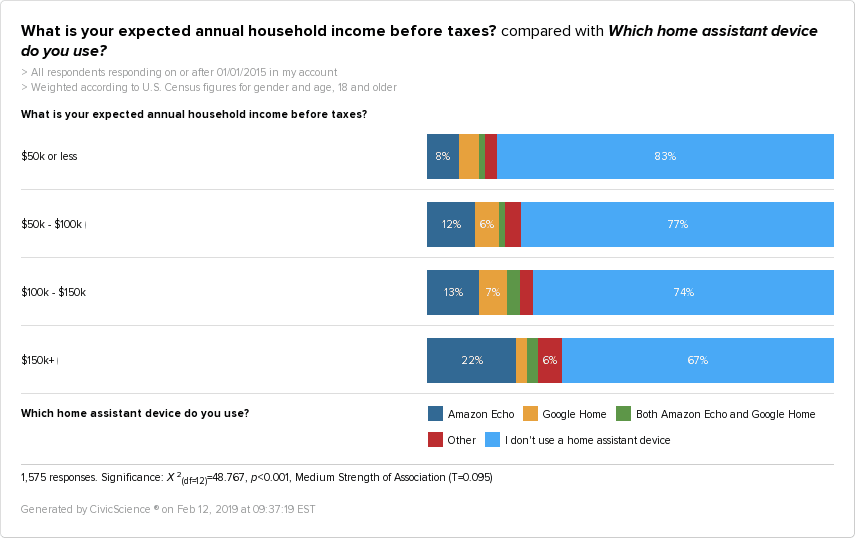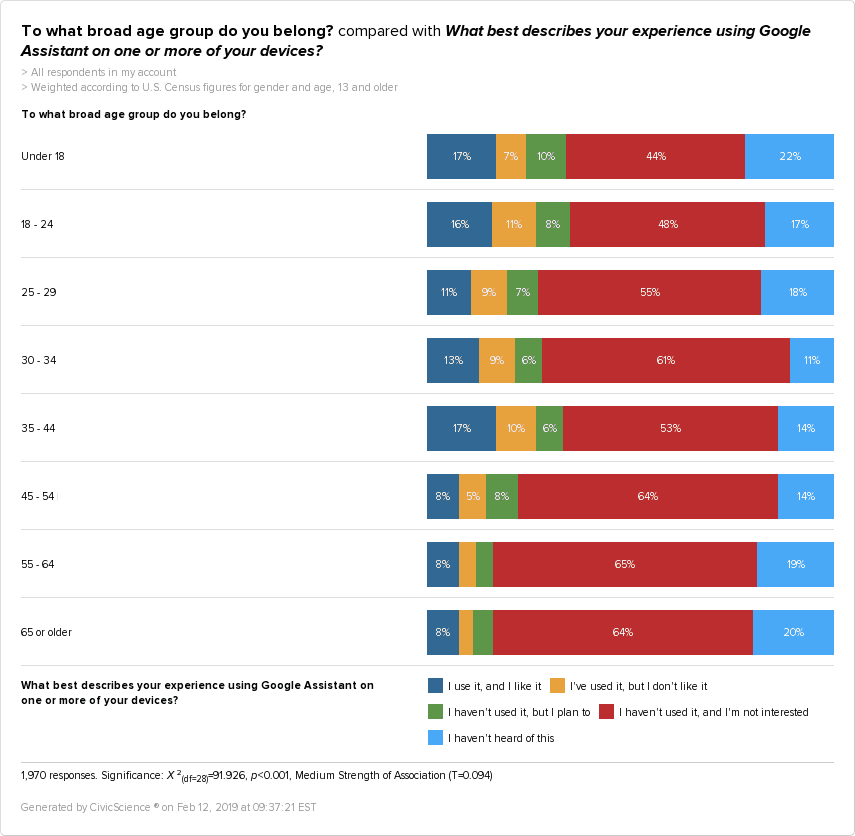The fight for your digital ecosystem continues.
Amazon’s Alexa is now a household name, but Google recently announced that its voice assistant app, Google Assistant, was on track to reach 1 billion devices across the globe by the start of this month, doubling what it was this time last year.
Both voice assistants can be used on Android and even iPhones through shortcuts, moving in on Siri’s turf. Both are used in home assistant devices — Amazon Echo and Google Home. Both are being integrated into smart home devices and gadgets from third-party manufacturers developing everything from speakers, to thermostats and clocks, to microwaves, fridges and lights.
And hey, if you’re feeling uninspired this Valentine’s Day, Google Assistant will serenade you and offer romance advice, while Alexa will help you find the perfect date dessert.
While we may be headed towards the holographic home assistant like in the movie Blade Runner: 2049, what exactly does the landscape look like for these two competitors in the U.S. market in 2019?
AI Voice Assistant Adoption Growing, but Privacy is a Challenge
Taking a broad look, an online poll by CivicScience of more than 1,700 U.S. respondents found that since the start of February 2019, nearly one-third of respondents report using an AI voice assistant and liking it, including Siri. That, of course, includes usage with devices across the board, be it smartphones, tablets, or home assistant devices.
In fact, voice assistant usage has been steadily rising since Q3 of 2018 when CivicScience began tracking it, growing from 22% to 29% today.
Given that 15% of people report having used voice assistants before but not liking them, that’s some significant growth.
Even so, Google is full steam ahead with Assistant development, stating that overall, the digital assistant market still has a ways to go in terms of adoption; right now, owning a digital assistant obviously isn’t viewed as a necessity.
At the same time, privacy concerns may rank high on the list of reasons holding back greater adoption. When comparing feelings about data privacy with AI voice assistant usage, the survey shows that those who have the least amount of trust in technology companies to guard their personal privacy (totaling 62% of U.S. adult respondents) also have the lowest voice assistant usage and are the most uninterested.
On the flip side, those with the greatest amount of trust are more than twice as likely to use a voice assistant.
Price is Undoubtedly a Deciding Factor for Owning a Home Assistant
Narrowing in on the home assistant device market, CivicScience learned through a poll of 2,025 respondents that one-quarter of respondents use a device such as Amazon Echo or Google Home — a figure in line with recent research focusing on how people use home assistant devices.
Considering that about 29% of U.S. respondents report using a digital voice assistant at all (as mentioned earlier), the findings also indicate that most people who report using a digital voice assistant of some kind own a home assistant device.
The Amazon Echo wins in terms of usage, ranking twice as popular as Google Home. More than half of all digital assistant device users use the Amazon Echo. Interestingly, a sliver of owners use both devices. Other competitors such as the Apple HomePod weigh in as well at 18% of device ownership.
Yet in addition to privacy concerns, cost is no doubt a prohibitive factor in the industry’s quest for greater adoption. The survey reveals a sliding scale between income and ownership; the more money you make, the more likely you are to own and use a home assistant device.
Adults earning $50K or less annually are 64% less likely than those making $150K or above to use Amazon Echo, Google Home, or any other digital home assistant. In fact, little noticeable variation exists among income levels and the different brands.
Google Assistant Is Popular with Young People
Even though Google Assistant/Google Home has a ways to go to meet Alexa, it has bright spots among certain pockets of the population.
The survey shows that Google Assistant has highest adoption rates among teens and 18-24-year-olds. Usage varies among older Millennial and Gen Xers, appealing particularly to 35-44-year-olds.
Adoption severely drops off with those 45 and older.
Ultimately, the market for digital assistants and automated home devices is growing and Google and Amazon are largely driving it. Google Assistant and Google Home are on the up-and-up but Google has some catching up to do with Alexa — and some are convinced it will. Certainly, getting in early with the young crowd can’t hurt.
Alternately, perhaps the two will differentiate themselves enough to cohabitate in a single household, an idea that Amazon isn’t necessarily opposed to. But if the surveys suggest anything, it’s that privacy and affordability concerns may be some of the main challenges standing in the way of wider adoption of digital home assistants in the U.S. at the moment.














